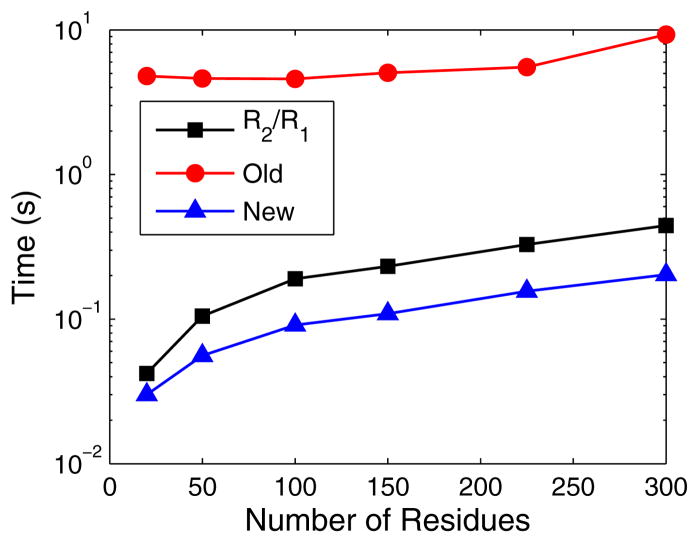Fig. 3.
Timing results for computation of the anisotropic rotational diffusion tensor for randomly generated data of various sizes. The black line (squares) corresponds to direct analysis of R2/R1, achieved using our new deterministic initial sampling approach. The blue line (triangles) shows timing for the new deterministic high-frequency subtraction algorithm. The red line (circles) represents the previous version of ROTDIF, which uses a stochastic initial sampling algorithm. Note that both R2/R1 and ROTDIF 3 are implemented in Java, while the old ROTDIF runs in Matlab.

